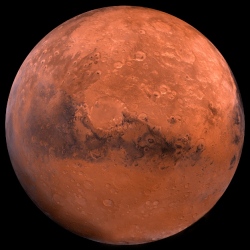
This week 13 people will begin a nine-month mission inside a small, remote station largely cut off from the world. Outside their habitat there is little air, extremely cold temperatures and no sunlight. The crew must eat only what they’ve stockpiled and recycle their precious water for reuse.
Despite appearances, however, these people are not going to space, but to the next best thing: Antarctica.
The European Concordia Research Station is set to begin its 10th winter season on the southernmost continent, where the sun will not rise for more than three months starting around May. In addition to conducting astronomical, atmospheric and glacier research, among other projects, the crew will serve as test subjects on a mock mission to Mars.
After all, their experiences are the closest we can come to learning how astronauts will fare on a real long-distance space voyage without actually sending them off Earth. "We’ll never be able to be 100 percent prepared for everything," says Oliver Angerer, project manager for Concordia at the European Space Agency (ESA). "We can only do the best we can by learning as much as we can from similar situations."
Scientists will closely monitor how the Concordia crew members fare physically, mentally and emotionally. "You have limited space for a bunch of people, no contact with the outside world in a normal way, no sunlight or normal circadian triggers," says Peter Gräf, life sciences program manager at the German Aerospace Center, who has worked on numerous Mars analogue missions.
"You have a bunch of people you have to get along with, and you have no alternatives and no escapes." Studies will track how their diet and metabolism correlate with mood changes, whether their sleep is disturbed by the lack of sunlight and pressure changes, and how the isolation and stress of the situation affect crew dynamics. All of these data will eventually be used to help plan the first official missions to Mars and other deep-space destinations.
